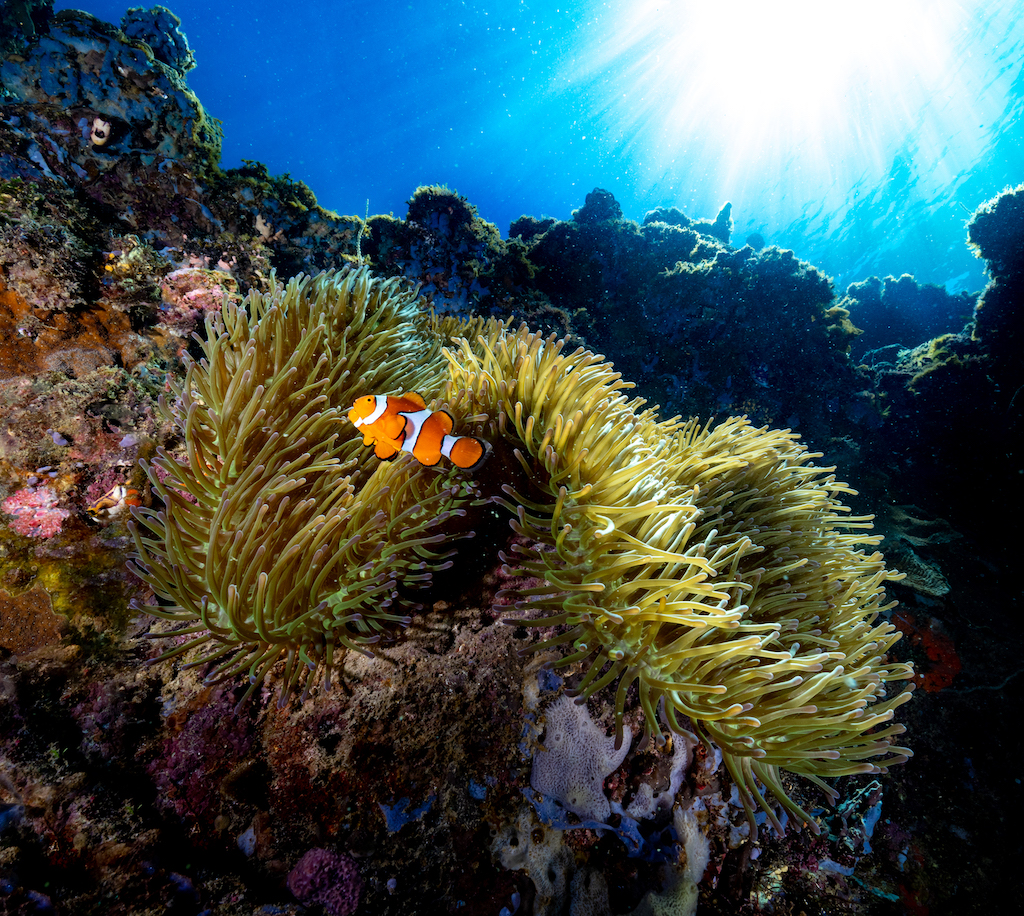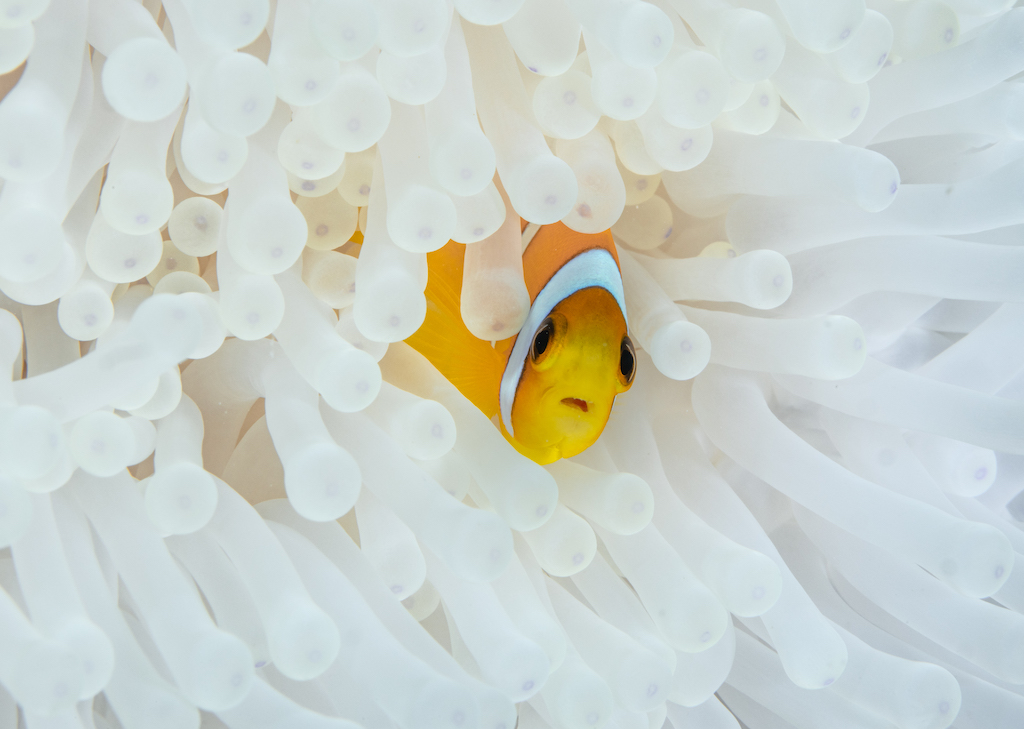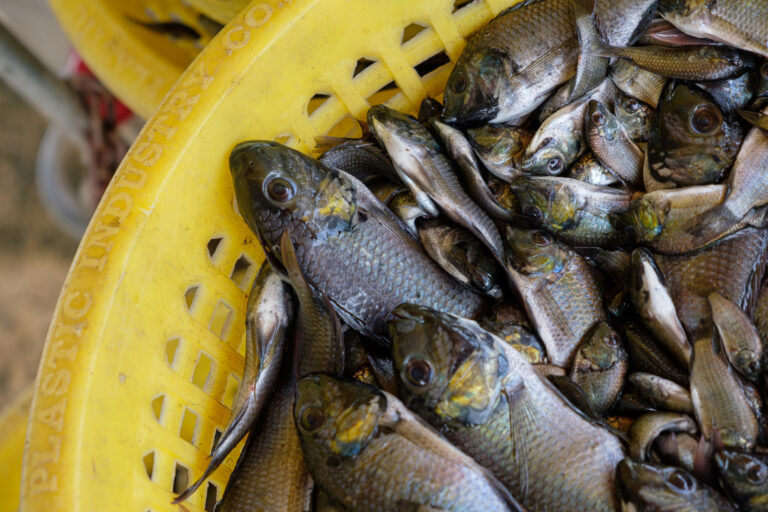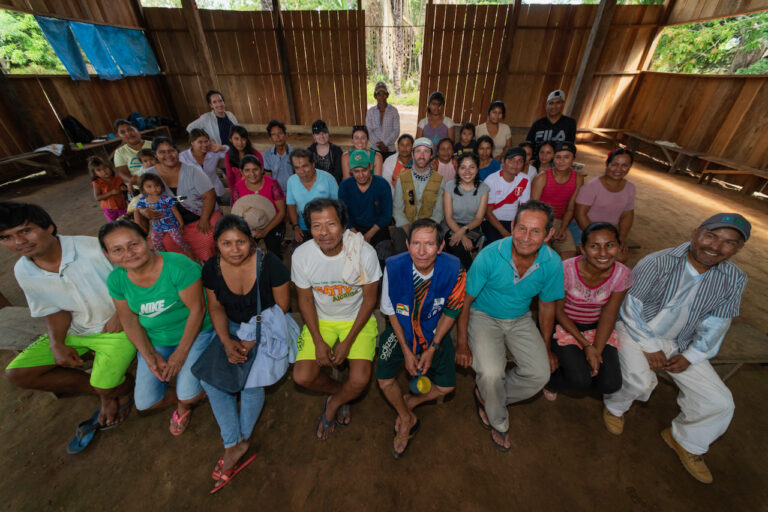- A 2023 marine heat wave in the central Red Sea caused 100% of monitored sea anemones to bleach, followed by the death of 94-100% of clownfish and 66-94% of the anemones across three surveyed reefs.
- The findings challenge the belief that Red Sea marine life, already adapted to naturally hot water, would be protected from climate change, showing instead that rising temperatures are pushing even these heat-adapted organisms past their survival limits
- While six other Indo-Pacific regions experienced similar bleaching events with anemone deaths below 3%, the Red Sea’s 78% mortality rate reveals that 22 degree heating weeks marks a critical breaking point where these ancient partnerships fall apart.
- Researchers are calling for more monitoring of anemones worldwide while Saudi Arabia responds with expanded conservation efforts, including the world’s largest coral nursery and experimental probiotics to help reef organisms survive heat stress.
When Morgan Bennett-Smith descended to a familiar reef in the central Red Sea in September 2023, he expected to find the same tagged anemones and resident clownfish he had been monitoring for months. Instead, he found a ghostly landscape: every anemone had turned white, and most of the bright-orange fish that had been sheltering in protective tentacles just weeks earlier were gone.
By the following spring, the reef looked even worse. Of the 168 clownfish Bennett-Smith and his colleagues had counted in December 2022, only seven remained.

A new study, published in npj Biodiversity, documents the effects of a marine heat wave across three reefs in the Red Sea. First, all the anemones bleached. Then, 94-100% of the clownfish disappeared. Finally, 66-94% of the anemones died. The events represent the near-total local collapse of a mutualism that had endured for millions of years.
Between 2022 and 2024, researchers tracked 168 Red Sea clownfish (Amphiprion bicinctus) and 143 host magnificent sea anemones (Radianthus magnifica) through a 2023 marine heat wave that peaked at approximately 22 degree heating weeks, a measure of accumulated heat stress.
The findings challenge a long-held belief that the Red Sea might be a thermal refuge, or safe haven, from the impacts of climate change. Scientists thought that because Red Sea organisms already live in naturally hot water, they would handle rising temperatures better than marine life in cooler regions.
“The thinking is that, because those temperatures are naturally already higher, that the species in this body of water are adapted to higher temperature,” Bennett-Smith, a Ph.D. candidate at Boston University in the U.S., who led the research, told Mongabay. “Unfortunately, what we found is just like everywhere else, that already higher temperatures in the Red Sea are also increasing.”

A partnership under pressure
Clownfish and sea anemones form one of the ocean’s most recognized mutually beneficial relationships. The anemones protect the fish and their eggs with stinging tentacles, while the fish provide nutrients and defense against predators, and oxygenate their hosts at night.
Like corals, anemones host symbiotic algae called zooxanthellae that provide most of their energy through photosynthesis. When water temperatures spike, anemones expel these algae, turning white or clear, a process called bleaching. The monitored anemones remained bleached for about six months during the 2023 heat wave, according to the study.
“Historically, anemones have bleached relatively little compared to corals, but now we’re getting up to levels where the anemones are bleaching, and that results in a catastrophic breakdown in the mutualism with the anemonefishes that everybody knows and loves,” Peter Buston, a Boston University associate professor of biology and senior author on the paper, said in a press release.
For Bennett-Smith, who has studied anemones in the Red Sea for nearly a decade, the event marked a turning point. He first visited the region in 2016 during an internship, and returned to complete a master’s degree. For the first five years, bleaching remained “an abstract concept” confined to other parts of the world. That changed in 2020, when he witnessed his first major bleaching event.
“I watched them go from thriving, healthy coral reefs to, in some cases, just complete rubble fields,” Bennett-Smith told Mongabay. “Marine scientists who’ve been doing this for decades have seen that in other places like Maldives, French Polynesia… But that was my first sort of visceral experience with it. And it was it was heartbreaking.”

“As a community, we understand that corals are in trouble, and that coral bleaching is this thing, this really bad thing that’s happening all over,” Bennett-Smith told Mongabay. “But I don’t think the concept of coral bleaching hits home for a lot of people. It’s kind of abstract, right? What’s a coral? It’s a rock.”
When he shares this research, people are often surprised to learn that anemones can bleach too. “And then, following through that story, it’s like, ‘Oh, wow. And then the clownfish, Nemo, [from the film Finding Nemo] you might say, has nowhere to live. Where does it go?’ And so there’s a human story there that I think people can identify with and understand.”
Fish go first
The research team is investigating why the fish vanished before the anemones died. Bennett-Smith told Mongabay they’re testing several hypotheses: that bright-orange fish become more visible to predators against bleached white anemones; that fish behavior changes during bleaching events, causing them to stray farther from protective tentacles; and that conflicts between fish intensify, leaving smaller individuals exposed.
Preliminary testing with collaborators at Harvard University found that anemones’ stinging cells fire less when bleached, Bennett-Smith told Mongabay, potentially leaving the fish more vulnerable to predators.
“These anemonefish become sitting ducks,” Buston said. “They’re not great swimmers and don’t stray from their anemones, so they presumably get taken off by predators.”

A global context
The study compared the Red Sea mortality with six other anemone bleaching events across the Indo-Pacific. None reported mortality above 3%, which is far lower than the approximately 78% anemone mortality rate in the Red Sea.
Papua New Guinea experienced thermal stress, reaching 18 degree heating weeks in 2023, with 57% of anemones bleaching; however, anemone mortality was only around 2%.
Raquel Peixoto, a professor at King Abdullah University of Science and Technology (KAUST) in Saudi Arabia, who co-led the research, noted that these bleaching events occurred in a relatively small area.
“The Red Sea is still much more pristine than any other area that I have visited,” Peixoto told Mongabay. “And if you go to most of the places, they are still gorgeous and still very diverse.”
But the localized event carries broader implications. “If mortality like this can happen even in places with the most pristine and biodiverse organisms, organisms already adapted to warmer water,” Peixoto said, “we need to be careful with the rest of the planet.”
Looking ahead
The dramatic decline highlights the urgent need for conservation. Red Sea clownfish groups were already smaller than populations elsewhere, averaging just 1.17 fish per anemone before the bleaching event, far lower than the 3-4 fish per anemone typical in Papua New Guinea.
Recovery remains possible if the region experiences several years without extreme bleaching, Bennett-Smith said. Anemones can reproduce both sexually and asexually, and if they recover, fish populations could rebound.

“I think climate is just so far and above the other risks there,” Bennett-Smith told Mongabay, noting that while Red Sea reefs face various threats, including coastal development, rising temperatures pose the greatest danger.
Saudi Arabia has expanded its reef conservation efforts in recent years. KAUST’s Coral Restoration Initiative includes the world’s largest land-based coral nursery. Peixoto’s team has also built the first coral probiotics village in the Red Sea, an underwater laboratory where researchers are testing whether probiotics can help corals and anemones survive heat stress.
The researchers call for more monitoring throughout the Red Sea and around the world. Anemones have been studied far less than corals, and researchers need to figure out the specific temperature limits for different species to predict when these partnerships will break down.
For the clownfish made famous in Finding Nemo, the stakes are high. Without their anemone hosts, these fish have nowhere to hide, nowhere to raise their young, and little chance of survival on reefs under stress.
“We’re committed to remaining at the forefront of this research,” Peixoto said, “sharing our findings with the global scientific community to guide policy decisions and conservation priorities, before it is too late.”
Banner image of a clownfish in a bleached anemone in the Red Sea. Photo courtesy of Morgan Bennet-Smith.
When heat waves hit, clownfish shrink to survive, study finds
After historic 2024 coral bleaching, hope remains for Mesoamerican Reef
Citation:
Bennett-Smith, M. F., Villela, H., Justo, M. S., Peinemann, V. N., Berumen, M. L., Carvalho, S., … Peixoto, R. S. (2025). Near complete local extinction of iconic anemonefish and their anemone hosts following a heat stress event. npj Biodiversity, 4(1). doi:10.1038/s44185-025-00107-4
Liz Kimbrough is a staff writer for Mongabay and holds a Ph.D. in ecology and evolutionary biology from Tulane University, where she studied the microbiomes of trees. View more of her reporting here.
FEEDBACK: Use this form to send a message directly to the author of this post. If you want to post a public comment, you can do that at the bottom of the page.














